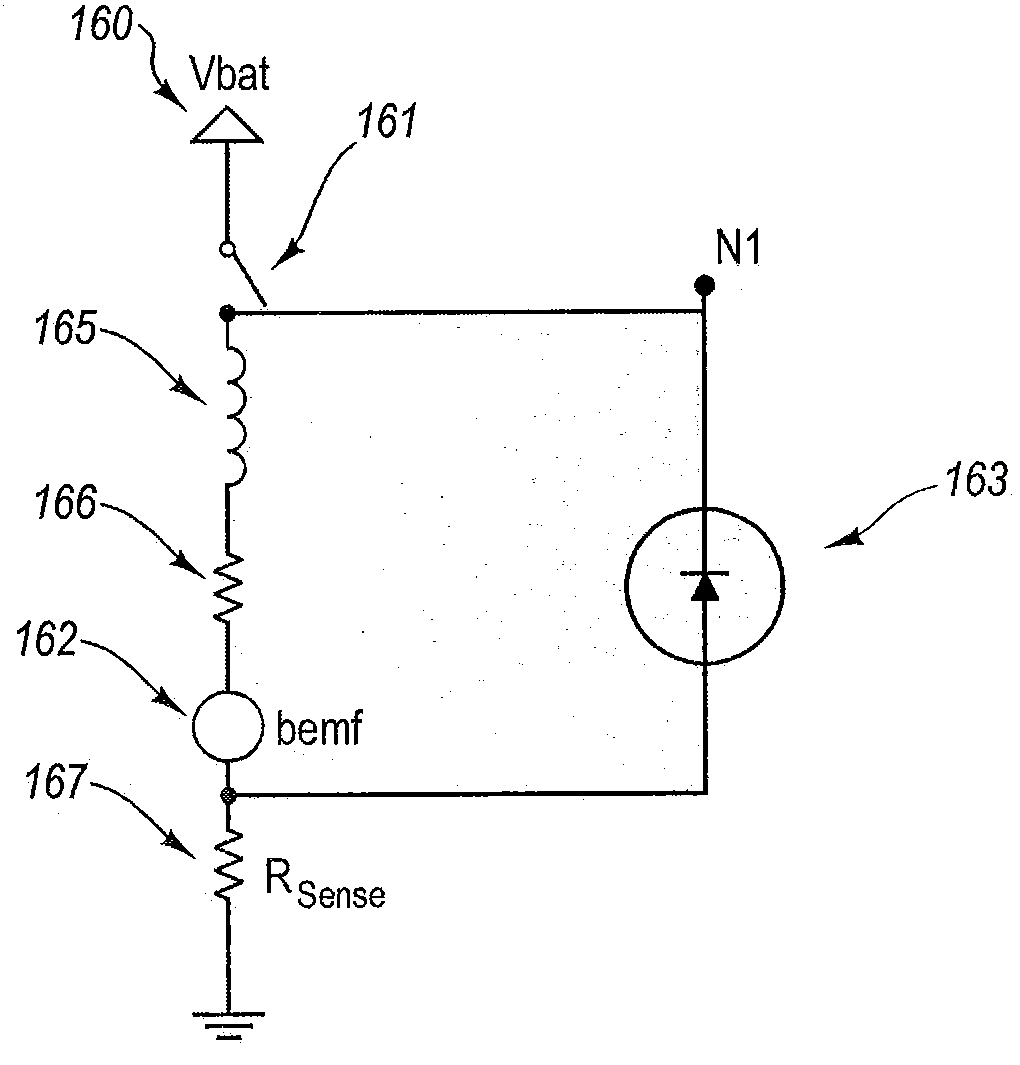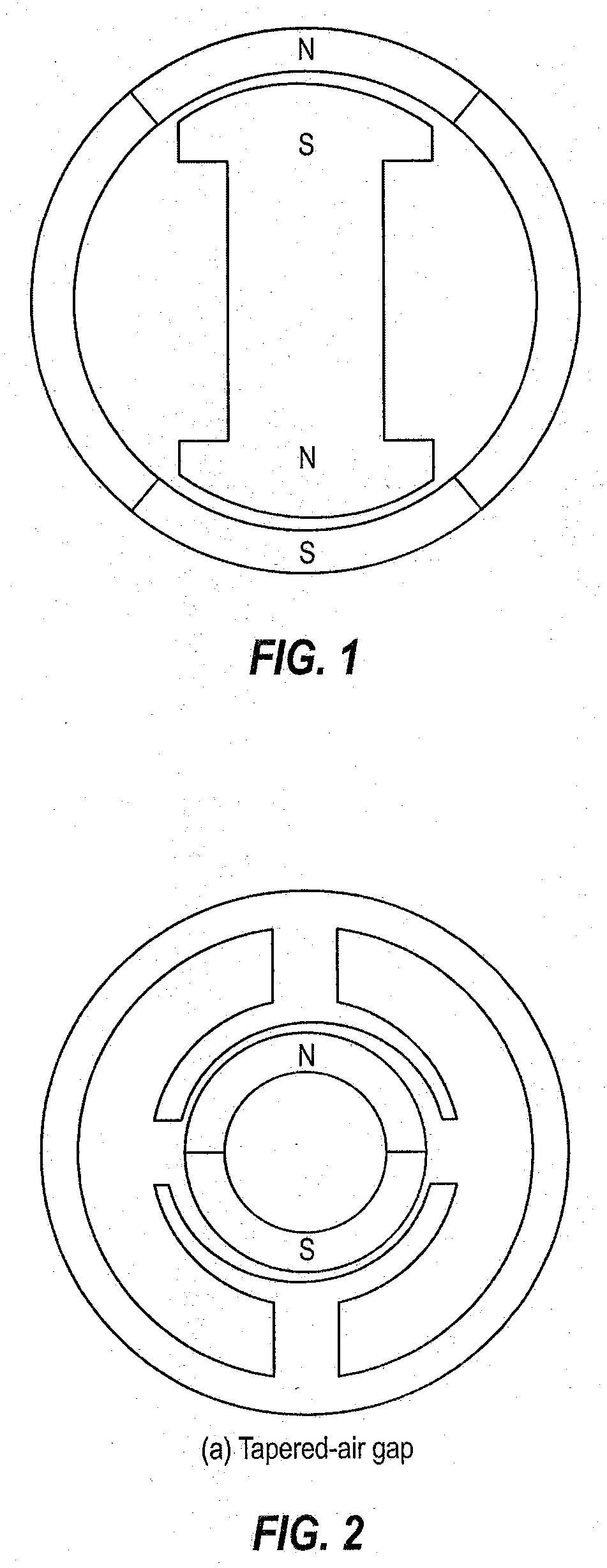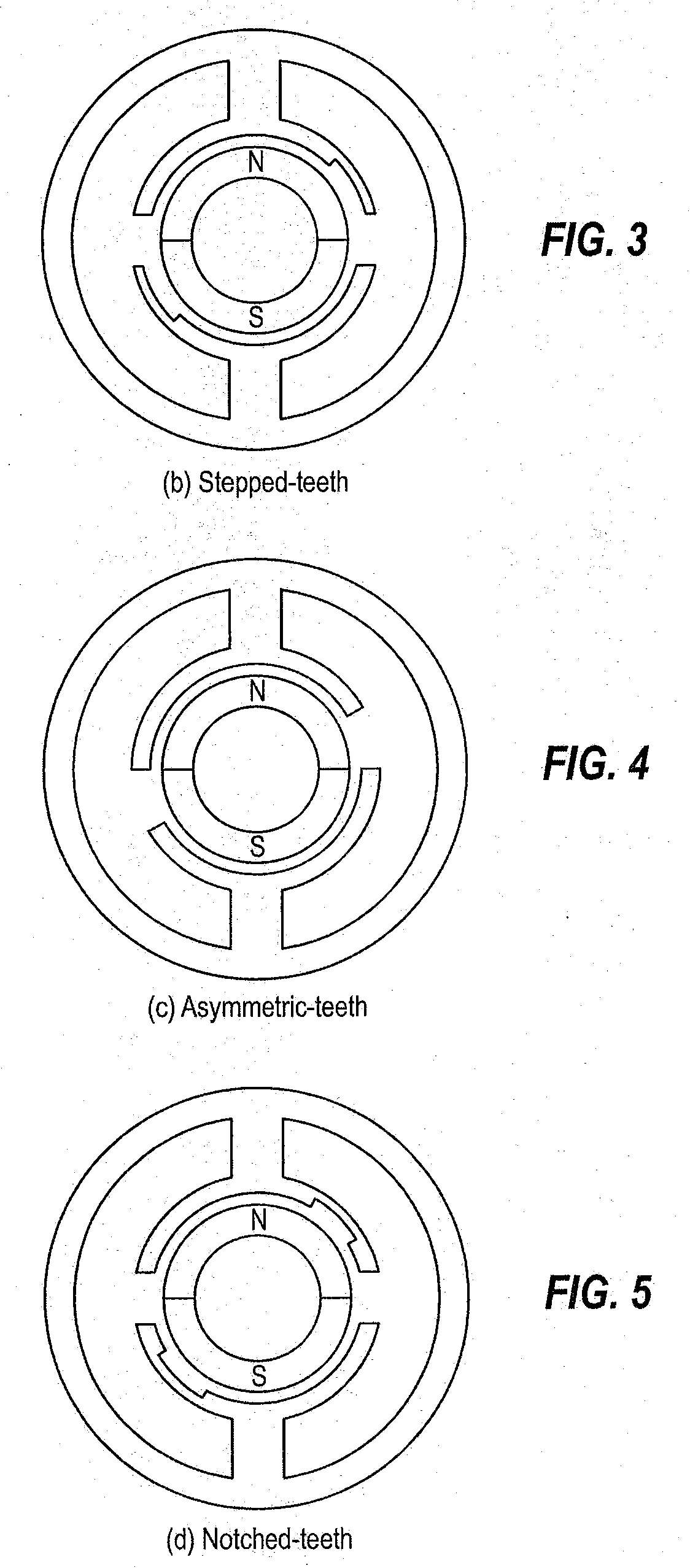Method and apparatus for driving a DC motor
a dc motor and control method technology, applied in the direction of dynamo-electric machines, synchronous motor starters, stopper details, etc., can solve the problems of inapplicability of back emf sensing approach, inability to use the vast majority of single-phase brushless dc motors, and inability to have natural single-phase motors
- Summary
- Abstract
- Description
- Claims
- Application Information
AI Technical Summary
Benefits of technology
Problems solved by technology
Method used
Image
Examples
Embodiment Construction
[0060]In the following, the acronym BEMF will designate the back electromotive force. Together with BEMF either back emf or BEMF signal will be used to refer to the back electromotive force signal. The following convention will be used when describing the state of a switch and in particular transistor switch. The transistor (switch) will be said to be closed (as if it were a normal mechanical switch) when it allows current to flow through it. In other words, when the transistor switch is closed it is conducting. The transistor (switch) is then switched ON. The transistor (switch) will be said to be opened when it does not allow current to flow through it. In other words, when the transistor switch is opened it is not conducting. The transistor (switch) is then said to be switched OFF.
[0061]Driving a permanent magnet brushless motor usually requires a knowledge of the BEMF signal (and / or characteristics of the back electromotive force signal) and in particular the moments at which th...
PUM
 Login to View More
Login to View More Abstract
Description
Claims
Application Information
 Login to View More
Login to View More - R&D
- Intellectual Property
- Life Sciences
- Materials
- Tech Scout
- Unparalleled Data Quality
- Higher Quality Content
- 60% Fewer Hallucinations
Browse by: Latest US Patents, China's latest patents, Technical Efficacy Thesaurus, Application Domain, Technology Topic, Popular Technical Reports.
© 2025 PatSnap. All rights reserved.Legal|Privacy policy|Modern Slavery Act Transparency Statement|Sitemap|About US| Contact US: help@patsnap.com



